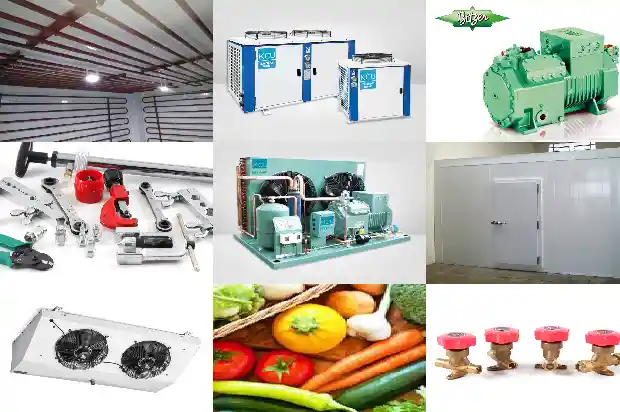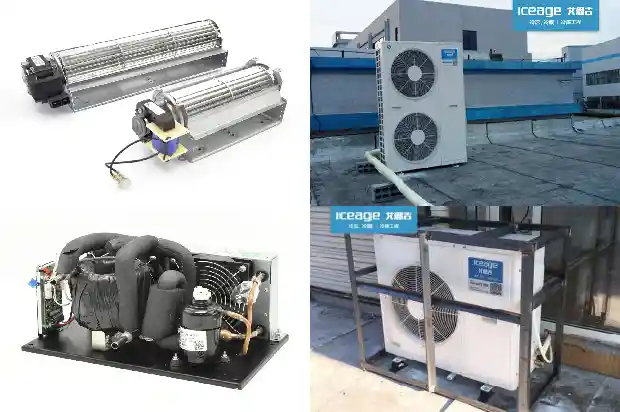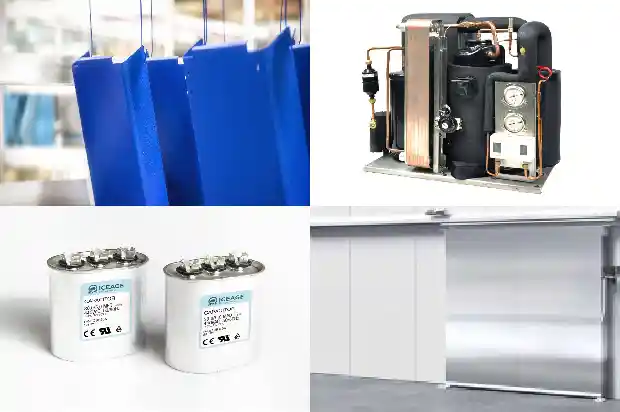Introduction to the Cleaning Processes and Methods of Heat Exchangers and Cooling Towers
2024-12-17
In the refrigeration industry, cooling towers are mainly used for condensation and heat dissipation in fields such as cold storage, air conditioning, and heat pumps. Using water as a circulating coolant, the heated cooling water in the tower body contacts with the flowing air for heat exchange to generate steam, which volatilizes and takes away heat, and then discharges and dissipates into the atmosphere, playing the roles of evaporative heat dissipation, reducing water temperature, and ensuring the normal operation of the system.
Cooling towers are exposed to the outside all year round, and the suction force of the fans is very strong, allowing a large amount of silt and dirt to enter the towers. Long-term operation will gradually reduce the heat dissipation capacity of the cooling towers. The water outlet holes of the water distributor are easily blocked, and silt and dirt can also easily enter the cooling water system, which will directly affect the normal refrigeration of the cooling water system. Therefore, in order to ensure the normal operation of the cooling water system, it is recommended to clean the cooling towers regularly.


I. Cooling Tower Cleaning Process
- Water Cleaning
The purpose of water flushing is to flush away loose dirt such as dust, silt, detached algae, and corrosion products in the system with a large flow of water as much as possible, and at the same time check the leakage situation of the system. The flow velocity of the flushing water should be greater than 0.15 m/s. After the flushing is qualified, drain all the flushing water in the system. - Bactericidal, Algicidal and Slime Stripping Cleaning
The purpose of bactericidal and algicidal cleaning is to kill the microorganisms in the system and make the biological slime attached to the surface of the equipment peel off. After draining the flushing water, add bactericidal and algicidal agents into the system for cleaning. Stop the cleaning when the turbidity of the system tends to be balanced. - Cleaning Solution Scale Removal and Cleaning
The function of the cleaning solution is to use the cleaning agent to dissolve the scales and oxides in the operating system and dissolve them in water. Add the cleaning agent to the central air conditioning operating system. The circulating pump conducts cleaning and discharge at the highest and lowest points to avoid air blockage and shower blockage and damage to the cleaning effect. The concentration of the cleaning solution, the concentration of metal ions (Fe2, Fe3, Cu2), temperature and pH value should be regularly detected. - Rinsing After Cleaning
This water flushing is to rinse off the residual cleaning solution and the impurities removed during cleaning. During the flushing, the drain valve should be continuously opened to rinse away the impurities and residual liquid deposited in the short pipes. Continuously test the pH value and turbidity during the flushing, and end the flushing when the pH value and turbidity tend to be stable. - Pre-filming
The function of pre-filming is to make the metal surface or the metal surface damaged by the protective film after cleaning form a complete anti-corrosion protective film.
Neutral Cleaning Without Shutting Down the Unit
Under the normal operation state of the unit, add the neutral cleaning agent to the cooling water and refrigerant water systems for cyclic cleaning for about 30 days, then discharge the cleaning solution and add the maintenance agent to end the cleaning process. This scheme has a relatively long cleaning time, but it can be carried out under the normal operation state of the unit and will not affect the normal operation of the unit. Because the cleaning solution is neutral, it will not cause corrosion to the system and equipment. During the cleaning process, the dirt in the system is gradually dissolved, and no scale flakes will block the filter screen after cleaning.
II. Cleaning of Condensers and Evaporators
Condensers and evaporators are important components of refrigeration units. Their heat exchange effect directly affects the refrigeration effect, and the main factor affecting the heat exchange effect is to keep the copper pipes inside the condensers clean, especially to remove the hard scale, soft scale and various impurities on the inner walls of the copper pipes. The most commonly used method is chemical cleaning.
Condensers and evaporators are important components of refrigeration units. Their heat exchange effect directly affects the refrigeration effect, and the main factor affecting the heat exchange effect is to keep the copper pipes inside the condensers clean, especially to remove the hard scale, soft scale and various impurities on the inner walls of the copper pipes. The most commonly used method is chemical cleaning.

Operation Process:
(1) Close the inlet and outlet water valves, open the blowdown valve, and check the closing status of the inlet and outlet water valves.
(2) Open the end cover, take some scale samples, and conduct scale removal tests with different concentration ratios of the scale remover.
(3) Correctly connect the cleaning pump according to the method of low inlet and high outlet.
(4) Use an external water pump to fill the barrel with water, and start the cleaning pump to circulate until the water is stable.
(5) Slowly add the scale remover to the barrel in batches, and repeatedly rinse with tap water after circulation.
(6) Rinse the cleaning pump with tap water.
(7) Open the end cover and use a tube cleaner to clean the tubes.
(1) Close the inlet and outlet water valves, open the blowdown valve, and check the closing status of the inlet and outlet water valves.
(2) Open the end cover, take some scale samples, and conduct scale removal tests with different concentration ratios of the scale remover.
(3) Correctly connect the cleaning pump according to the method of low inlet and high outlet.
(4) Use an external water pump to fill the barrel with water, and start the cleaning pump to circulate until the water is stable.
(5) Slowly add the scale remover to the barrel in batches, and repeatedly rinse with tap water after circulation.
(6) Rinse the cleaning pump with tap water.
(7) Open the end cover and use a tube cleaner to clean the tubes.
Related Articles
- Introduction to Inspection and Handling Methods for Refrigerant Leak in Cold Storage
- Introduction to Control Valves in Refrigeration Systems
- Introduction to Basic Types of Cold Storage
- Introduction to Lithium Bromide Absorption Chillers
- Introduction to the Advantages of Dual - temperature Cold Storage
- Introduction to Various Water Tanks in Air - conditioning Systems
- Introduction to Six Kinds of Two-stage Compression Refrigeration Systems
- Introduction to Key Points of Compressor Grouping in Quick-freezing Cold Storage
- Introduction to the Construction and Features of Cold Storage in Cold Chain Logistics
- All-round Introduction to Condensers and Evaporators!
- Introduction to Vapor Barrier of Cold Storage and Moisture Protection of Equipment
- Introduction to Oil Collector in Refrigeration System
- Technical Introduction of Process Cooling Water System
- Introduction to Air-cooled Chiller
- Introduction to Five Classification Functions of Cold Storage Installation for Refrigeration
- Introduction to Precooling Methods for Fruits and Vegetables
- Introduction to the Relationship between Refrigerants and Cold Storage Temperatures
- Introduction to Types of Condensers in Cold Storage
